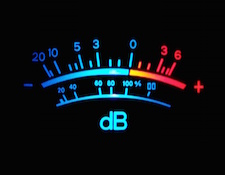It’s the time of year for saving money!
As I began to fine-tune my upstairs 2.1 system the other day I discovered an interesting phenomenon – to get better bass I had to turn it down.
 Actually the problem was in the midbass – it was too thick. My solution for this excess midbass bloom was to readjust how I set up the crossovers to both my mains and my subwoofer. In the end I had better results from attenuating the full-range response of my mains up to nearly 120 Hz than letting them extend down to their native 45 Hz.
Actually the problem was in the midbass – it was too thick. My solution for this excess midbass bloom was to readjust how I set up the crossovers to both my mains and my subwoofer. In the end I had better results from attenuating the full-range response of my mains up to nearly 120 Hz than letting them extend down to their native 45 Hz.
I have several different ways I could configure my system, and I tried them all. But in the end the best way for this particular room and these particular main speakers was to attenuate their low frequency response so there was less low-frequency interaction between the main speakers and the room. By shifting some of the midbass power over to the subwoofer, which I could place in a more bass-friendly spot in the room, I cleaned up the bass at the same time as I extended the bass response downward.
Some audio firms that make subwoofers recommend not doing exactly what I’m doing because by using a crossover on your mains you increase the phase shift near the crossover point making a smooth meld between main and sub more difficult. REL (who only make subwoofers) advocates always using the mains full-range sans crossover for best phase response. I see their point, and in some systems (such as the one in my downstairs room) I do exactly that. But it’s a question of proportion – what is producing more distortion in the system – the main speaker’s bass response interacting with your room or the lack of seamlessness between the mains and the sub? In this particular room the answer was clearly the former.
 And how can you “folks at home” figure out which methodology is best for your system? The best and time-tested method is also the most lugubrious – you run test tone sweeps, take measurements, and make adjustments to your crossover settings and subwoofer placements until you achieve the flattest measurements and the most seamless balance between your sub and main speakers. In my situation I ended up with a certain amount of blue, easy to remove, masking tape on the floor with each section covered with markings such as “test 4 placement A” before the afternoon was over.
And how can you “folks at home” figure out which methodology is best for your system? The best and time-tested method is also the most lugubrious – you run test tone sweeps, take measurements, and make adjustments to your crossover settings and subwoofer placements until you achieve the flattest measurements and the most seamless balance between your sub and main speakers. In my situation I ended up with a certain amount of blue, easy to remove, masking tape on the floor with each section covered with markings such as “test 4 placement A” before the afternoon was over.
I know that some of you, the ones with one of those automatic room measurement and adjustment options built into their pre-pros, receivers, or computer audio systems are thinking, “What an unnecessary hassle – all I have to do is set up a microphone and run the program.” But my experience, and that of quite a few reviewers of automatic systems, is that you can achieve a better result from doing your own measurements and adjustments manually than by relying on the built-in expert system, especially when it comes to bass response and subwoofer integration.
My own experience with some very good multi-band, system-calibrated computer-based room-correction EQ systems was that they “cleaned up” the harmonic balance so much that the speakers lost some of their dynamic verve and individual personality. Yes, I know the ideal transducer would or should have no sonic personality whatsoever. But in the real world a speaker’s “voice,” which can usually be traced back to some variation from absolute neutrality, is the sound that we fall in love with from a speaker. While I’m not saying that colorations are a good thing, but my experience with computer-calibrated room correction systems was that they bleached too much of the life out of my system’s sound.
In the end there’s really no substitute for putting in the time to do your own measurements and fine-tuning, especially when I t comes to speaker placement and crossover settings. Yes, it’s not terribly entertaining or exciting, but the final results are worth it.





